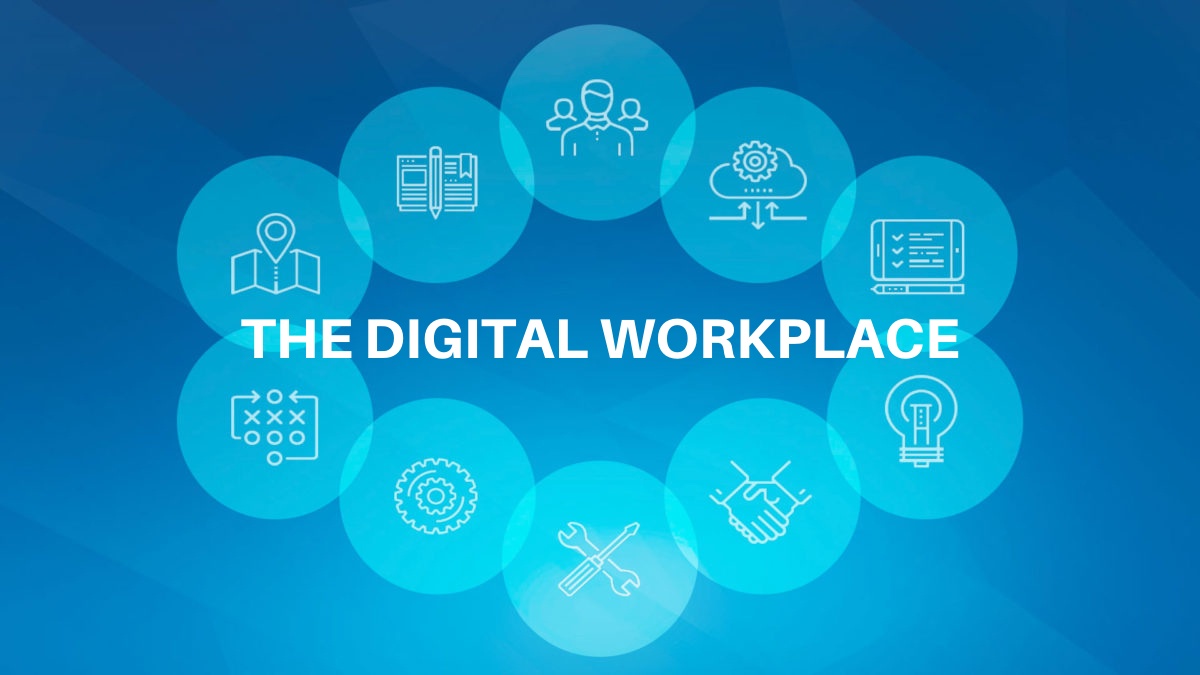What used to take days or months to complete can now be completed in a matter of seconds. All thanks to technological advancements and digital devices that have made an irreplaceable place in human lives as a result. They have tectonically shifted the way things were merely a century ago.
Digital gadgets have virtualized or semi-virtualized several aspects of the real world with improved connectivity scenarios. The workplace is one of the major aspects of numerous individuals’ lives, which is increasingly shifting toward digital workplace mode in recent times.
What is the Digital Workplace Trend?
The digital workplace in simple words is a virtual work environment where an employee can work on their day-to-day tasks without having to be present at the physical office or work location all the time. Modern world gadgets such as laptops, tablets, 4G or 5G smartphones, video cameras, and other cutting-edge tools are utilized by companies and employees to keep up with the workplace transformation trend.
The digital workplace trend has roots in the early 2000s and has evolved significantly. However, the drive to digitize workplaces worldwide was more recently fueled by the emergence of COVID-19. The majority of the companies shifted the workplace to remote /work-from-home (WFH) modes to keep the operations running during the subsequent pandemic time lockdowns.
Even after the wide vaccination and opening of worldwide economies, numerous companies are showing lenience towards keeping the digital work trend active. For instance, major corporations such as Amazon, Alphabet, Meta, Salesforce, and numerous others companies, have either continued WFH digital workplace model or implemented hybrid work models.
Digital Workplace Tools
Software and technology services providing platforms are major tools that support the digital workplace environment. These tools not only enable virtualizing daily tasks but also establish enhanced collaboration and communication between employees that are working in remote mode.
A digital workplace is a combination of communication, collaboration, cloud computing, connectivity, and cybersecurity solutions. Depending on their advanced features and adaptability, these tools facilitate improved employee productivity and overall organizational workings, similar to real-world offices.
Cloud Computing: The cloud services and software solutions provided by third-party platforms have been at the forefront of the digitization of workplaces across industries. Today, there is a wide range of specialized cloud computing solutions available for companies in every other sector. Owing to quick adaptability and improved workflow numerous companies have onboarded or are in the process to implement cloud solutions for their day-to-day workings.
These cloud-based solutions can be accessed and used from internet-connected devices from any location of choice. Cloud computing as per recent research has become a multi-billion dollar industry and is swiftly progressing towards achieving a trillion dollars mark in the coming years.
Communication Tools: Communication is an essential requirement in any organization, be it a physical or digital workplace mode. To keep communication real, clear, and authentic in virtual workplace mode several video conferencing, audio conferencing, and messaging tools are playing a key role.
The examples of digital workplace communication tools are quite many. Some of the majorly used video conference tools are Zoom, Slack Microsoft Teams, Skype, DeskAlerts, Google Meet, and Webex, among others.
Video conferencing tools are major tools that are being used for effective communication in digital workplace mode. The rising use of video communication tools for corporate interactions has fueled the demand for video conferencing tools, generating multi-billion dollars revenues for the global technology industry.
Collaboration Tools: Employees need to collaborate consistently to work on ongoing projects or assigned tasks. Several digital solutions have emerged to facilitate effective collaboration with internal and external stakeholders of an organization.
Some of the major examples of digital workplace collaboration tools are Slack, GoToMeeting, Trello, Asana, Basecamp, and Microsoft Teams, among others. These tools are eliminating the need to write emails for every other requirement, improve workflow, and streamline project management. With the rising adoption of digital workplace tools, team collaboration software demand fueling across global corporations.
Connectivity & Cybersecurity: For any organization to adopt digital workplace mode, connectivity, and cybersecurity solutions play an important role. Strong wireless connectivity enhances data transmission.
Whereas, the adoption of cybersecurity solutions helps in protecting intellectual assets such as customer databases, innovations, and project plans from hackers. Some companies only allow working in remote mode when their preferred connectivity and cybersecurity measures are installed on the work gadgets used by employees.
Who Are the Major Providers of Digital Workplace Tools?
Digital workplace tools are being adopted across industries. They are allowing companies to provide their employees with improved work flexibility and comfort. Companies can hire talent across the globe, gain enhanced productivity, and also save costs, among other benefits.
Some of the major providers of digital workplace software and services are IBM; Wipro Limited; HCL Technologies Limited; Atos SE; DXC Technology Company; Citrix Systems, Inc.; NTT Data Corporation; Tata Consultancy Services Limited (TCS); Accenture plc; and Infosys Limited.
The digitization and globalization drive across businesses are likely to support the growing demand for digital workplace solutions in the coming years. The key providers in the market are creating pioneering solutions for transforming digital workplace space regularly, to make it closer or even equivalent to the physical office.


No comments yet